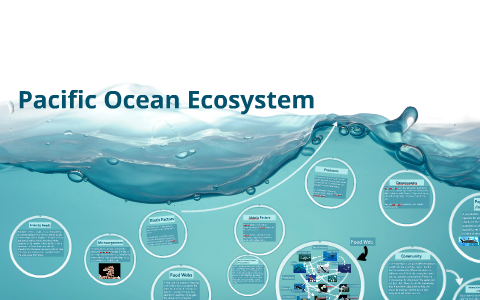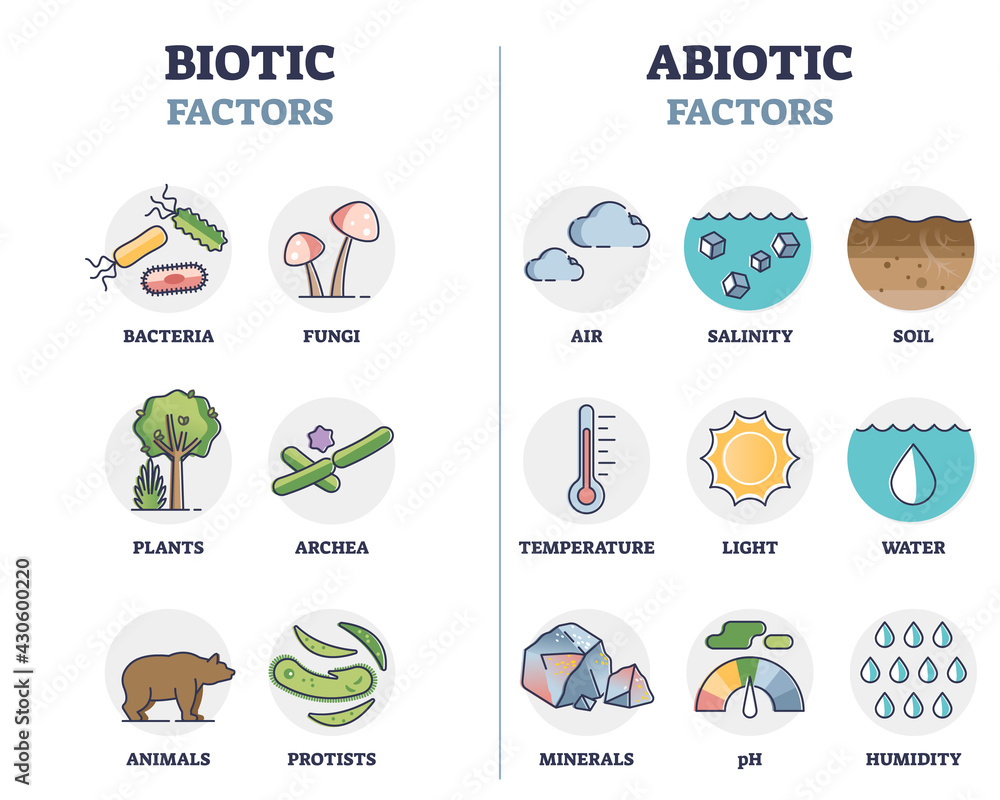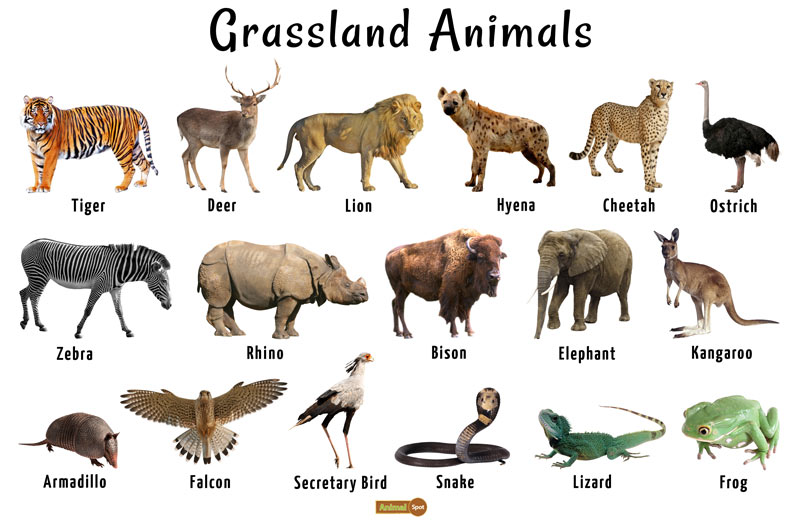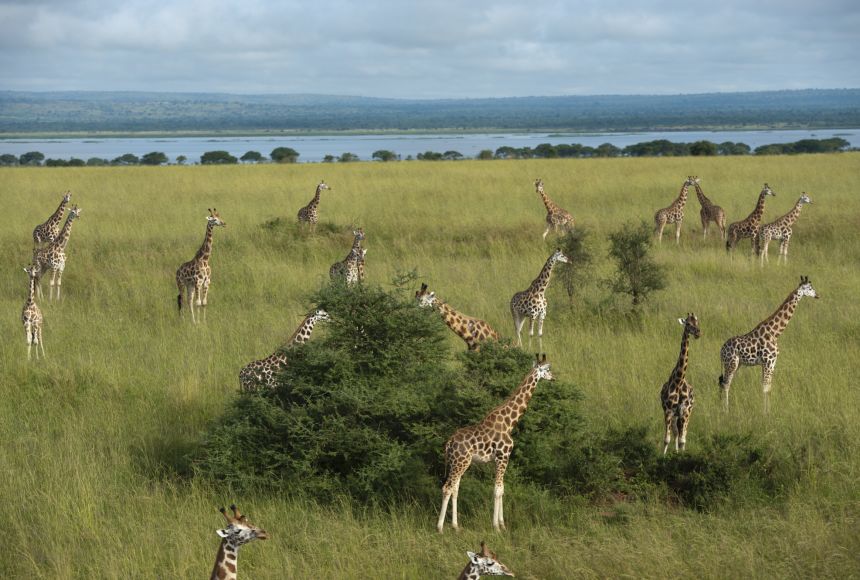Topic abiotic factors in the ocean ecosystem: Discover the pivotal role of abiotic factors in the ocean ecosystem, shaping the diverse marine life and influencing its delicate balance beneath the waves.
Table of Content
- What abiotic factors influence the ocean ecosystem?
- Overview of Abiotic Factors
- Temperature and Its Impact
- Light Availability and Photosynthesis
- Salinity Levels and Marine Life
- Dissolved Oxygen and Aquatic Organisms
- Water Movement: Currents, Waves, and Tides
- YOUTUBE: Ocean Abiotic Factors
- Nutrient Availability
- pH Levels and Marine Ecosystems
- Pressure and Depth
- Human Impacts on Abiotic Factors
What abiotic factors influence the ocean ecosystem?
Abiotic factors are non-living components that influence the ocean ecosystem. These factors play a crucial role in shaping the characteristics and functions of the marine environment. Here are some of the key abiotic factors that influence the ocean ecosystem:
- Sunlight: Sunlight is essential for photosynthesis, which is the process by which plants and algae convert sunlight into energy. It provides energy to the primary producers and influences the distribution and behavior of marine organisms.
- Temperature: The temperature of the ocean affects various biological processes and determines the range of species that can thrive in different regions. It influences factors like metabolism, reproduction, and migration patterns of marine organisms.
- Salinity: Salinity refers to the salt concentration in the water. It affects the density of the water, which has implications for the movement and distribution of marine organisms. Different species have varying tolerances to salinity levels.
- Dissolved Gases: Gases such as oxygen and carbon dioxide dissolved in the ocean play a vital role in the respiration and survival of marine organisms. Oxygen availability is essential for the survival of aerobic organisms.
- Substrate: The ocean floor\'s physical characteristics, including composition, structure, and relief, form the substrate for various marine organisms. It provides attachment spots, hiding places, and a source of nutrients for benthic organisms.
- Nutrients: Nutrients like nitrogen, phosphorus, and trace elements are essential for the growth and development of marine organisms. They influence primary productivity and the overall food web dynamics in the ocean.
- Currents: Ocean currents affect the distribution of organisms and the transport of nutrients and other organic matter. They can facilitate movement, migration, and dispersal of both larvae and adult organisms.
READ MORE:
Overview of Abiotic Factors
Abiotic factors are the non-living chemical and physical elements of the environment that affect living organisms and the functioning of ecosystems. These factors are crucial in shaping the ocean ecosystem, influencing the distribution, behavior, and survival of marine life. Understanding these abiotic components is essential for comprehending how life thrives in the aquatic environment.
- Temperature: It plays a significant role in determining the types of organisms that can live in certain parts of the ocean. Temperature affects metabolic rates and the biological processes of marine life.
- Light Availability: Light penetration in water influences photosynthesis in marine plants and visibility for predators and prey. The depth and clarity of water affect how much light is available.
- Salinity: The concentration of salt in water affects the buoyancy, reproduction, and osmoregulation of marine organisms.
- Dissolved Oxygen: Oxygen is crucial for the respiration of aquatic life. The amount of dissolved oxygen can affect species composition and biodiversity.
- Water Movement: Currents, waves, and tides can influence nutrient distribution, temperature, and the habitats of marine life.
- Nutrient Availability: Nutrients such as nitrogen and phosphorus are essential for the growth of aquatic plants and the overall productivity of the ocean ecosystem.
- pH Levels: The acidity or alkalinity of the ocean can affect the health of marine organisms, particularly those with calcium carbonate structures like corals and shellfish.
- Pressure and Depth: The increase in pressure with ocean depth affects the physiology of deep-sea organisms.
- Human Impacts: Human activities such as pollution, overfishing, and climate change are altering abiotic factors, with significant consequences for marine ecosystems.
These abiotic factors are interconnected, and changes in one can lead to shifts in others, demonstrating the complexity and dynamism of the ocean ecosystem. By studying these factors, scientists and conservationists can better predict and mitigate human impacts on marine environments.

Temperature and Its Impact
Temperature is a fundamental abiotic factor in the ocean ecosystem, influencing both the physical environment and the biological processes within it. The ocean"s temperature varies by depth, geographical location, and season, creating a diverse range of habitats suited to different marine species.
- Regulation of Biological Processes: The metabolic rates of marine organisms are directly affected by the surrounding water temperature. Warmer temperatures can increase metabolism in some species, leading to faster growth and reproduction rates. Conversely, cooler temperatures tend to slow down these processes.
- Distribution of Species: Temperature gradients in the ocean help to determine the distribution of marine species. Some species are adapted to the warm waters of the tropical regions, while others thrive in the colder waters of polar areas. Temperature changes can cause species to migrate to new areas in search of optimal living conditions.
- Seasonal Cycles: Seasonal changes in temperature influence breeding, migration, and feeding patterns of marine life. Many marine species have adapted their life cycles to the seasonal variations in temperature.
- Thermal Stratification: Water layers in the ocean often stratify according to temperature, with warmer, less dense water sitting atop cooler, denser layers. This stratification can affect the mixing of nutrients and oxygen between layers, impacting the productivity and biodiversity of marine ecosystems.
- Impact of Climate Change: Global warming is causing significant changes in ocean temperatures, leading to coral bleaching, shifts in species distributions, and altered migration patterns. The increasing temperature can also affect the strength and patterns of ocean currents, further impacting marine ecosystems.
Understanding the impact of temperature on marine ecosystems is crucial for predicting the effects of climate change on oceanic life and for developing strategies to protect and conserve marine biodiversity.
Light Availability and Photosynthesis
Light availability is a critical abiotic factor in the ocean ecosystem, profoundly influencing photosynthesis, the primary process through which energy enters the marine food web. The penetration of sunlight into the ocean"s depths varies, impacting the photosynthetic activity of marine plants and phytoplankton, which form the base of the aquatic food chain.
- Photosynthesis in Marine Ecosystems: Photosynthesis in the ocean is primarily carried out by phytoplankton, algae, and seagrasses. These organisms convert light energy into chemical energy, producing oxygen and organic compounds that serve as the foundation for the marine food web.
- Light Penetration: The amount of light that penetrates the ocean decreases with depth. The euphotic zone, where light intensity is sufficient for photosynthesis, typically extends to a depth of about 200 meters. Below this zone, the availability of light rapidly diminishes, limiting the photosynthetic activity to the upper layers of the ocean.
- Impact of Turbidity: Turbidity, caused by suspended particles in the water, can reduce light penetration, affecting the growth and distribution of photosynthetic organisms. Clear waters allow deeper light penetration, supporting photosynthetic life at greater depths.
- Seasonal Variations: Seasonal changes in light availability, influenced by the angle of the sun and day length, can lead to fluctuations in photosynthetic productivity. In polar regions, the seasonal variations are more pronounced, with periods of continuous daylight or darkness.
- Adaptations to Low Light: Many marine organisms have adapted to low-light conditions. For example, some phytoplankton can adjust their pigmentation to absorb different light wavelengths, and deep-sea plants often grow in areas where light is reflected or scattered, maximizing photosynthesis.
The availability of light in the ocean not only dictates the primary production through photosynthesis but also influences the behavior and distribution of marine organisms, shaping the structure and dynamics of the entire ecosystem.

Salinity Levels and Marine Life
Salinity, the concentration of salt in water, is a vital abiotic factor that influences the distribution, diversity, and physiological processes of marine life. The ocean"s salinity levels vary by region due to factors such as evaporation, freshwater inflow, and ice formation. These variations in salinity affect marine organisms in several ways.
- Osmoregulation: Marine organisms have adapted to maintain internal salt concentrations that are optimal for their survival. Fish and other marine life use osmoregulation to balance the intake and expulsion of salts and water, a process that is directly influenced by the salinity of their environment.
- Species Distribution: Different species are adapted to various salinity ranges. Some species thrive in the open ocean"s stable, high-salinity environments, while others are adapted to estuarine areas where freshwater mixes with seawater, resulting in lower salinity levels.
- Reproductive and Life Cycle Strategies: Salinity levels can influence the reproductive cycles and development of marine organisms. For example, some species may lay their eggs in specific salinity conditions to ensure optimal survival rates for their offspring.
- Biological Productivity: Regions with varying salinity levels, such as estuaries and coastal waters, often support high levels of biodiversity and biological productivity due to the mixture of nutrients from both freshwater and marine sources.
- Adaptations to Extreme Conditions: Extreme environments, like hypersaline lagoons or salt marshes, are inhabited by specialized organisms that have developed unique adaptations to survive high salinity levels, demonstrating the incredible adaptability of marine life.
Understanding the effects of salinity on marine ecosystems is crucial for conservation efforts, as changes in freshwater inflow or ocean circulation patterns due to climate change can alter salinity levels, impacting marine biodiversity and ecosystem services.
Dissolved Oxygen and Aquatic Organisms
Dissolved oxygen is a critical abiotic factor in the ocean ecosystem, essential for the survival of aquatic organisms. Oxygen in the water is necessary for respiration in fish, invertebrates, and aerobic bacteria. The level of dissolved oxygen in marine environments can vary due to temperature, salinity, water movement, and the presence of plant life.
- Oxygen Solubility: Colder water can hold more dissolved oxygen than warmer water. Consequently, regions and depths with lower temperatures often have higher concentrations of oxygen, supporting diverse marine life.
- Photosynthesis: Aquatic plants and photosynthetic plankton produce oxygen during daylight hours through photosynthesis, increasing the availability of dissolved oxygen in the water, which is vital for other organisms" respiration.
- Water Movement: Currents, waves, and tides help to mix oxygen-rich surface waters with deeper layers, distributing dissolved oxygen throughout the water column. Areas with stagnant water may have lower oxygen levels, affecting the survival of marine life.
- Impact on Ecosystem Health: Adequate levels of dissolved oxygen are necessary for healthy marine ecosystems. Low oxygen environments, or hypoxic zones, can lead to "dead zones" where few organisms can survive, affecting biodiversity and fishery resources.
- Human Impacts: Pollution and nutrient runoff can lead to eutrophication, a process where excessive nutrients promote algal blooms that deplete oxygen levels in the water as algae decompose, further impacting aquatic life.
The balance of dissolved oxygen is crucial for maintaining the health and biodiversity of marine ecosystems. Monitoring and managing oxygen levels in marine and estuarine environments are important for conservation and sustainable fisheries management.

Water Movement: Currents, Waves, and Tides
Water movement, encompassing currents, waves, and tides, is a dynamic abiotic factor that significantly influences the ocean ecosystem. These elements of water movement play critical roles in shaping marine habitats, distributing nutrients and organisms, and affecting the climate and weather patterns globally.
- Ocean Currents: Ocean currents, driven by wind patterns, the rotation of the Earth, and differences in water density, circulate warm and cold water around the globe. They regulate climate by transporting heat from the equator towards the poles and influence the distribution of marine species by moving nutrients, plankton, and larvae across vast distances.
- Waves: Waves, created by the wind blowing across the surface of the sea, contribute to the mixing of the ocean"s surface layer. This mixing is essential for the distribution of oxygen and nutrients, facilitating the biological processes of photosynthesis and respiration in marine ecosystems. Waves also shape coastal habitats, affecting the distribution of organisms in these areas.
- Tides: Tides, caused by the gravitational pull of the moon and sun, create rising and falling water levels that influence coastal and intertidal zones. The tidal movements contribute to the ecological dynamics of these areas, affecting the feeding and breeding patterns of many marine and shore species.
- Ecological Impacts: Water movement affects the structure of marine ecosystems by determining the availability of food, the dispersal of organisms, and the accessibility of habitats. Currents, waves, and tides also play a pivotal role in the life cycles of many marine species, from plankton to the largest marine mammals.
- Human Interactions: Understanding water movement is crucial for navigation, fisheries management, and predicting the impact of climate change on ocean circulation. It also helps in assessing the risks of coastal erosion, storm surges, and the dispersion of pollutants.
The interplay of currents, waves, and tides shapes the physical and biological characteristics of the ocean, demonstrating the interconnectedness of abiotic factors and their collective impact on marine life and ecosystems.
Ocean Abiotic Factors
Abiotic factors: Explore the fascinating world of abiotic factors in this captivating video! Learn how non-living elements such as sunlight, temperature, and soil composition shape our environment and impact living organisms. Get ready to be amazed by the intricate web of interactions between these factors and unlock the secrets of our natural world.
Interactions Between Living and Non-Living Things | Abiotic & Biotic Factors
Interactions: Dive into the captivating realm of interactions with this mesmerizing video! Witness the intricate dance between organisms as they navigate the delicate balance of symbiotic relationships, predator-prey dynamics, and community interactions. Unlock the hidden secrets of how different organisms rely on each other for survival in this awe-inspiring exploration of the interconnectedness of life.
Nutrient Availability
Nutrient availability in the ocean ecosystem plays a crucial role in supporting the growth and sustenance of marine life, particularly phytoplankton, which form the base of the aquatic food web. Essential nutrients, such as nitrogen, phosphorus, and iron, are required for the biological processes of marine organisms, influencing productivity and biodiversity in the marine environment.
- Sources of Nutrients: Nutrients enter the ocean through river discharge, atmospheric deposition, and the recycling of organic matter. Upwelling currents also bring nutrient-rich deep waters to the surface, supporting high levels of primary productivity.
- Role of Phytoplankton: Phytoplankton use sunlight and available nutrients to produce organic matter through photosynthesis, serving as a fundamental food source for marine food webs. The availability of nutrients directly influences their growth and distribution.
- Seasonal Variations: Nutrient availability can vary seasonally, with higher concentrations often occurring during the spring and fall when changing temperatures and water movements promote the mixing of water layers, bringing nutrients to the surface.
- Impact on Marine Ecosystems: Regions with high nutrient availability, such as upwelling zones and estuaries, tend to have high biological productivity, supporting diverse marine communities. Conversely, nutrient-poor areas, like some tropical and subtropical waters, are less productive.
- Human Impacts: Human activities, including agriculture runoff, sewage discharge, and industrial pollution, can alter nutrient levels in marine environments, leading to eutrophication and harmful algal blooms that disrupt marine ecosystems and deplete oxygen levels.
Understanding nutrient dynamics is essential for managing fisheries, protecting marine biodiversity, and addressing environmental challenges such as eutrophication and hypoxia in marine ecosystems.

pH Levels and Marine Ecosystems
The pH level, a measure of the acidity or alkalinity of water, is a critical abiotic factor that influences marine ecosystems. Ocean water typically has a slightly alkaline pH, but variations can occur due to natural processes and human activities. Changes in pH levels can affect the chemical balance of the ocean, impacting marine life and ecosystem health.
- Calcification Processes: Many marine organisms, such as corals, mollusks, and certain species of plankton, rely on calcium carbonate for their skeletons and shells. Changes in pH levels can affect the availability of carbonate ions, essential for calcification, making it difficult for these organisms to build and maintain their structures.
- Impact on Organism Health: Shifts in pH can influence the physiological processes of marine organisms, including reproduction, growth, and respiration. Acidic conditions can lead to increased stress and decreased survival rates for some species.
- Acidification from CO2 Emissions: The absorption of increased levels of carbon dioxide (CO2) from the atmosphere is causing ocean acidification. This ongoing decrease in pH levels poses a significant threat to marine biodiversity and ecosystems, particularly coral reefs.
- Buffering Capacity: The ocean has a natural buffering capacity that helps to mitigate changes in pH. However, the rapid rate of CO2 emissions exceeds the ocean"s ability to buffer these changes, leading to acidification.
- Ecological Impacts: Changes in pH can alter the nutrient cycling, food web dynamics, and habitat structures within marine ecosystems. The effects of acidification are complex and can lead to shifts in species distribution and ecosystem function.
Mitigating the impacts of ocean acidification and monitoring pH levels are vital for protecting marine ecosystems and ensuring the resilience of marine biodiversity in the face of environmental change.
Pressure and Depth
Pressure and depth are interrelated abiotic factors that play a crucial role in the ocean ecosystem. The pressure in the ocean increases by approximately one atmosphere (atm) for every 10 meters of depth, significantly affecting marine life and the physical properties of the ocean. Understanding how pressure and depth influence the ocean is essential for comprehending the adaptability and diversity of marine organisms.
- Adaptations to High Pressure: Marine organisms living at great depths have evolved unique adaptations to survive under high pressure. These adaptations include changes in cellular structure, enzyme function, and membrane composition, allowing them to withstand the intense pressure without being crushed.
- Influence on Physical Properties: Pressure affects the physical properties of water, including its density, temperature, and the solubility of gases. High pressure at depth can compress water slightly and increase its density, affecting buoyancy and the behavior of sound and light underwater.
- Biological Distribution: The increasing pressure with depth limits the distribution of marine life. While a wide range of species inhabit the relatively less pressurized surface waters, only specially adapted species can survive in the deep-sea environments.
- Deep-Sea Exploration: Understanding the effects of pressure and depth is critical for deep-sea exploration and the development of technology to study and explore the ocean"s depths. This research helps scientists discover new species, understand geological processes, and assess the impact of human activities on deep-sea ecosystems.
- Impact on Decompression: The knowledge of pressure gradients is also important for diving operations, as rapid changes in pressure can lead to decompression sickness. Understanding these gradients is essential for the safety of divers and for operations involving submersible vehicles.
The interaction between pressure and depth shapes the physical environment of the ocean and influences the evolution, distribution, and physiology of marine organisms. These factors contribute to the complexity and diversity of life in the marine ecosystem.
READ MORE:
Human Impacts on Abiotic Factors
Human activities have significantly impacted the abiotic factors of the ocean ecosystem, altering its physical and chemical properties and, consequently, affecting marine life and biodiversity. The influence of these activities extends from the surface to the deepest parts of the ocean, prompting a need for sustainable practices and conservation efforts to mitigate negative effects.
- Climate Change: The release of greenhouse gases into the atmosphere has led to global warming and climate change, affecting ocean temperatures, sea level rise, and causing ocean acidification. These changes impact the distribution of marine species, coral bleaching, and shifts in oceanic currents and weather patterns.
- Pollution: Pollutants, including plastics, chemicals, and heavy metals, enter the ocean through runoff, dumping, and atmospheric deposition. These pollutants can alter the chemical composition of seawater, reduce water quality, and harm marine organisms and ecosystems.
- Overfishing: Overfishing and unsustainable fishing practices affect the balance of marine ecosystems, leading to a decrease in biodiversity and altering the food web dynamics. This can indirectly affect abiotic factors by changing the distribution of species that play a role in nutrient cycling and sedimentation.
- Habitat Destruction: Coastal development, dredging, and bottom trawling destroy habitats such as coral reefs, mangroves, and seagrass beds, which are crucial for the stability of marine ecosystems and the protection of coastlines against erosion.
- Eutrophication: Nutrient runoff from agriculture and wastewater discharge leads to eutrophication, creating hypoxic zones with low oxygen levels that can suffocate marine life and disrupt ecosystem functioning.
- Acidification: The absorption of CO2 by the ocean lowers its pH, affecting calcifying organisms and altering the solubility of nutrients and toxic metals in seawater, further impacting marine life and food webs.
The cumulative impacts of these human activities underscore the importance of adopting sustainable practices, reducing carbon footprints, and implementing effective marine management and conservation strategies to safeguard the health of the ocean ecosystem for future generations.
Exploring the abiotic factors of the ocean ecosystem unveils the intricate balance sustaining marine life. Understanding these elements is crucial for conservation, offering insights to protect our oceans and preserve their diversity for future generations.






